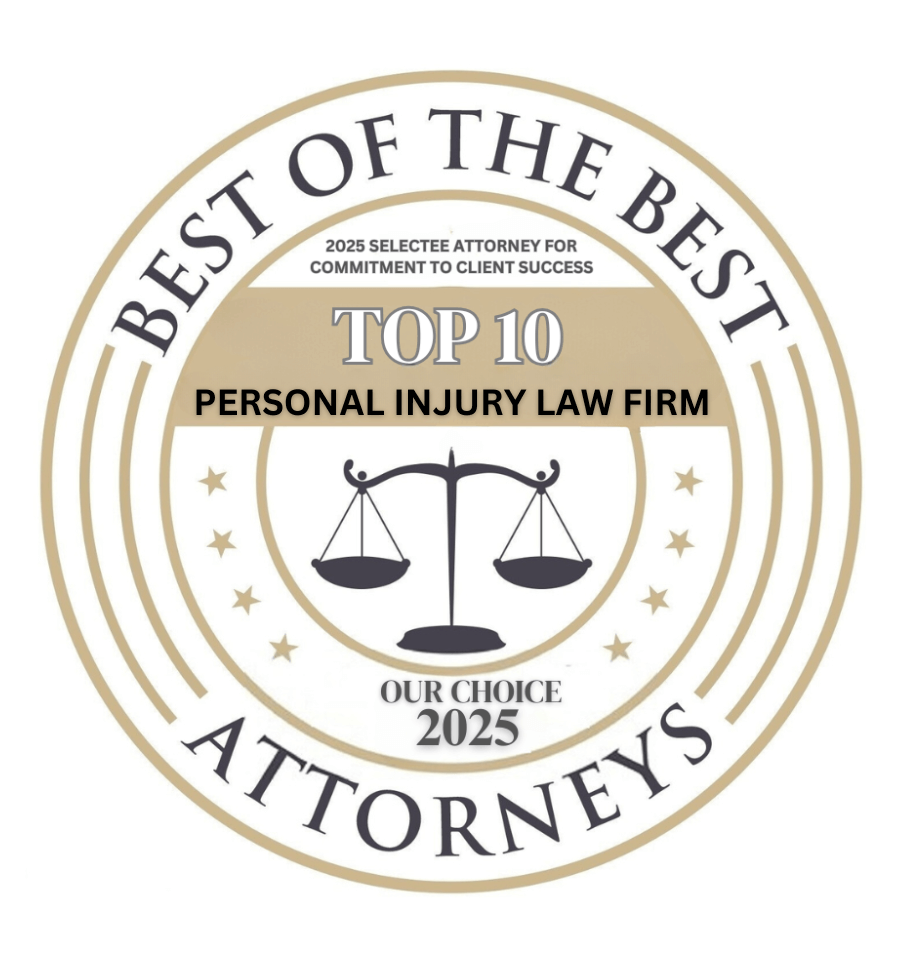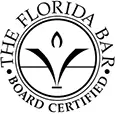Who Pays for Rear-End Collisions?
Rear-end collisions are commonly known as fender benders, making people less likely to take them seriously. Some rear-end collisions, however, result in catastrophic injuries with lifelong consequences.
You should always take any accident and injury seriously and discuss your compensation options with a car accident lawyer immediately.
Rear-end collisions and fault
According to reports by the National Highway Traffic Safety Administration (NHTSA), about 1.7 million rear-end collisions happen yearly across the country. These collisions result in around 500,000 motorists suffering injuries and 17,000 dying.
The rear driver usually causes these accidents. However, your claim is contingent on the concept of negligence, and you must prove what the driver did wrong to hold them liable for your losses.
In most cases, the lead driver followed traffic rules, and the trailing driver crashed into them. The police will likely automatically cite the rear driver, but your local car accident lawyer must have evidence the driver was negligent to obtain compensation for your damages.
Negligence in car accident claims
Drivers are negligent when they do not act reasonably and injuries result. In other words, their careless behavior hurts other motorists. You and your attorney must prove the elements of negligence for a successful claim.
First, you must prove to the insurance company that the rear driver owed you a duty of care, which all drivers owe each other.
Once you establish this, you must demonstrate a breach of that duty by the driver’s actions, including:
- Not paying attention to the cars in front of them
- Speeding
- Losing control of the vehicle
- Tailgating
- Failing to yield the right of way
- Driving too fast for weather or road conditions
The breach of duty must cause the accident, and lastly, you suffer injuries and damages from the collision. Each case is different, and establishing these elements is easier in some than others. Once your lawyer can prove these four elements, you can request compensation.
Rear-end crash injuries
Both slow and fast rear-end accidents can lead to debilitating injuries and life-altering consequences. Crumple zones, speed, and more contribute to the severity of the injuries you can suffer.
Examples of some injuries include:
- Back and neck: Most often, you will experience soft tissue damage or herniations due to the compression of your spine and discs. These injuries require extensive care, including surgeries.
- Wrist, hand, and arm: These body parts can hit the steering wheel, causing fractures and breaks. When airbags deploy, these appendages can also become trapped under the dashboard or wheel.
- Head and brain: When you are in a low-speed rear-end collision, the airbags might not deploy, causing your head to hit the dash. You can suffer a traumatic brain injury or concussion from these accidents.
- Seat belt injuries: You can suffer lacerations and bruises from your seat belt, which can be a trade-off to a permanent injury to your face and head if not wear a seat belt.
- Rotator cuff injuries: Often confused for mere soreness, these injuries can cause shoulder and muscle weakness, radiating pain in your arms, limited range of motion, popping in your shoulder, inability to raise your arm, swollen shoulders, and more.
- Whiplash: When your shoulders, neck, and spine violently lunge forward and backward during a rear-end collision, it can cause whiplash. While prevalent, these injuries also come with pain and soreness for an extended time.
An inherent complication for fender benders is that many injuries can delay in appearing. For example, head injuries are notorious for showing symptoms hours or days later. Delayed symptoms can further complicate your claim, so you should always seek an immediate medical evaluation, even if you don’t know if you have serious injuries.
Whiplash is prevalent after a rear-end crash
Whiplash presents as a soft tissue injury commonly associated with rear-end collisions and is very challenging to prove. These injuries do not always appear on diagnostic imaging, and medical professionals can diagnose them using rule-out methods and considering your symptoms.
Whiplash victims might complain about:
- Headaches
- Blurry vision
- Shoulder and back pain
- Concentrations problems
- Neck pain
- Fatigue
- Nauseous
Since quantifiable proof is difficult, car insurance companies will argue you are exaggerating the extent of your injuries and are always skeptical about whiplash claims. Experienced car accident lawyers might use different terminologies like cervical strains and sprains to circumvent the term’s negative connotations.
Cause of rear-end accidents
A rear-end collision can happen for many reasons, but most stem from negligence.
The rear driver can cause crashes when they:
- Drive drunk
- Drive tired
- Tailgate
- Speed
- Distracted drive
- Rubberneck
- Fail to upkeep their vehicles
Driver error is the leading cause, but some other contributing factors include:
- Road defects
- Bad weather conditions
- Construction zones
- Pedestrians
While these factors can contribute to driver negligence, it does not excuse their culpability. They must stay alert during construction zones and with bad weather conditions to avoid losing control.
Multi-car accidents
Rear-end collisions can be more complex when there are more than two vehicles involved. When more than two vehicles crash, it is a pile-up. If you are the lead vehicle, you are likely not at fault, but everyone behind you might share some culpability for your injuries. Multi-vehicle accidents also cause extensive injuries because instead of one car’s force hitting you, you get the power of many.
When multiple parties are in a rear-end collision, liability is a difficult issue. The rear vehicle that started the chain reaction is likely liable, but the cars in the middle might also share some liability.
If Driver A hit Driver B, and Driver B was speeding and could not stop in time to avoid a collision with Driver C, both A and B might share liability for C’s injuries.
You always need an experienced attorney in this situation.
Seeking compensation after a rear-end crash
Once your attorney reviews your situation and identifies the liable parties, it is time to file claims to seek compensation for your losses. You might have a claim against a single driver or multiple claims against different parties. You might file claims against two or more drivers, a driver’s employer, construction crews, municipalities, and more, depending on the cause of your rear-end crash.
The key factors determining your compensation are your injuries and the insurance policy limits of liable drivers. When the at-fault driver has enough coverage for your losses, you can hopefully obtain compensation through an insurance claim directly from their insurance company. Your insurance company might also step in and help with the process.
In either situation, you want your car accident lawyer to handle all communications. It is inadvisable to start a claim independently because the insurance company is looking for evidence to hurt you, including any statements you make.
When you receive a settlement offer from an insurance company, never accept it without legal advice and guidance. Once you accept an offer, there is no going back. If the
Some states work on the premise of no-fault, and you will go through your personal injury protection (PIP) coverage first instead of filing a claim with the at-fault driver’s insurance. If your injuries are serious and your losses exceed your PIP coverage, you might then pursue additional compensation from the liable drivers.
Your final option is to file a personal injury lawsuit, which becomes necessary when settlement negotiations are at a standstill or you are getting close to the statute of limitations. Filing a lawsuit always requires the assistance of a local car accident lawyer who is familiar with the deadlines, statutes, procedures, court rules, and how the process works.
Special and general damages
You can recover special and general damages after a rear-end collision. Special damages are also known as economic or financial, while general damages are non-economic.
Special damages involve items you paid for, like:
- Property damage
- Medical expense
- Lost income
- Funeral or burial expenses
- Future financial losses or expenses
Special damages are easier to calculate because you might have records and receipts, but general damages are more complicated since they involve intangible losses.
General damages include:
- Humiliation
- Inability to perform tasks
- Emotional distress
- Loss of reputation
- Pain and suffering
Since they are not as easily quantifiable, they are harder to prove, requiring the assistance of a car accident lawyer.
Calculating pain and suffering
Pain and suffering is a highly subjective type of car accident damage; therefore, it brings a lot of pushback.
However, some factors can help calculate these damages like:
- Type of injury or injuries you suffer
- The negative impact of those injuries on your life
- Impact on your ability to work and make money
- Potential long-term effects of your injuries
- How your injuries prevent you from attending events like weddings, graduations, vacations, and more
Accident victims can keep pain journals to help prove these points and the dates of events they could not attend. Nothing is too small to include in your pain journal. Medical experts can also testify to your pain and suffering following an evaluation.
How does your injury affect your settlement?
The severity of your injury will significantly impact how much compensation you can request. Your medical bills will vary depending on how severe your injury is. More serious injuries usually result in higher medical bills and more lost income, as well as greater pain and suffering.
The future prognosis of your condition is also a factor because it will determine your ability to work and participate in daily activities for years to come. If you require ongoing care, you need funds to cover that care. Disability can also increase your financial recovery. Always ensure you receive enough to cover your future losses.
Evidence is critical to your case
Your lawyer must find substantial evidence to prove your allegations or liability, injuries, and more for a successful claim. Skid marks, witnesses’ testament, and photographic evidence are vital but might not be enough. Your case can require expert witness testimony and accident reconstructionist accounts. A skilled attorney will know how to obtain strong supporting evidence.
How long do settlements take?
The answer is: it depends. Your claim should only settle once you know the extent of your injuries. You must reach maximum medical improvement or have a clear idea of your overall prognosis before a lawyer can calculate your future losses.
Before settlement, review your medical bills, health insurance coverage, and the other driver’s insurance policies to see if an offer is sufficient. If not, you might face several rounds of negotiations, which take more time.
Settlement resolution can happen in weeks or years, depending on individual factors. Your attorney will have a better idea of the potential length of your claim when they review your case file and medical diagnosis.
Are settlement awards taxable?
You received your settlement, but you still have questions about protecting yourself. You have worked hard to get this money and need it for your future. Can you keep it all or does the IRS take some?
Most injury damage awards are non-taxable, with some exceptions. Property damages awards are non-taxable, as are economic damages. Your medical bills might be taxable if you already deducted the expenses during your tax filing.
Pain and suffering awards will vary since those covering physical pain are non-taxable, while those covering emotional pain can be taxable. Damages for lost wages might also be subject to taxes since they are considered income. You can ask a car accident lawyer for assistance so you know what to expect.
You need a rear-end collision lawyer

Rear-end collisions can be impossible to avoid because, as the lead driver, you cannot see the other driver coming. There is often no maneuver that you can attempt to avoid the collision.
Accident victims can claim compensation for their losses after rear-end collisions, but that is hardly an easy task. Obtaining compensation requires the knowledge and advice of a car accident attorney. Do not hesitate to call a law firm near you today.
Request A Free Consultation Today!
Boohoff Law, P.A. — Auto Accident Lawyers – Tampa Office
829 W Dr Martin Luther King Jr Blvd,
Tampa, FL 33603
Phone: (813) 725-5606
Free Consultation
We Are Here For You 24/7
Reviews
– Elissa M.
“Really pleased with Boohoff Law! Received immediate responses when I had any questions. Treated amazingly by all staff … made this process a true breeze!”
– Caitlyn M.
– Brandy K.
Related Posts
Steps to Take After a Drunk Driver Hits Your Vehicle in Seattle
What Compensation Can You Claim for Severe Burn Injuries
What to Do After Being Injured in a Parking Lot Accident in Seattle
Recovery is personal.
We’re here for you.
You're better off with Boohoff.











The information on this website is for general information purposes only. Nothing on this site should be taken as legal advice for any individual case or situation. This information is not intended to create, and receipt or viewing does not constitute, an attorney-client relationship.
available 24/7
(877) 999-9999
